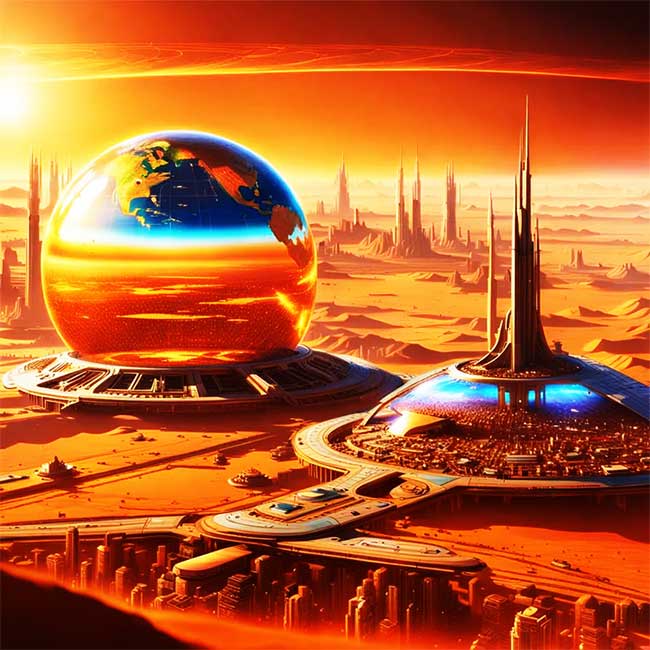Researchers believe that fish, shrimp, and water bears could become the first animals to live on the Moon and Mars alongside humans.
NASA plans to establish a permanent settlement on the Moon by the end of the century, followed by human exploration of Mars. However, as we set up bases beyond Earth, humans will need to bring along an ecosystem, including animals. After all, animals can assist in essential tasks such as pollinating plants, providing food through farmed shrimp and fish, or helping to manage radiation through water bears. However, the scientific community has not reached a consensus regarding which species could survive on the Moon and further on Mars, according to Live Science.

There is no consensus on which species could live on the Moon and beyond on Mars.
According to David Catling, an astrobiologist at the University of Washington in Seattle, the complex ecosystem beyond Earth is still a distant prospect and leans more towards science fiction than practical scientific research. Clearly, gravity could be a significant obstacle.
“The key issue is the reduced gravity,” said Christopher McKay, a planetary scientist at NASA’s Ames Research Center. The gravity on the Moon and Mars is only 1/6 and 1/3 that of Earth, respectively. Habitats could be constructed to mimic the familiar temperature, pressure, and atmosphere of living on Earth, but there is no way to change the gravitational force.
The best-case scenario is that animals could develop on Mars and the Moon similarly to how they do on Earth, but there is currently no data to support that. Altered gravity could affect muscle and bone development, making it difficult for animals on Mars to stand or move normally. Under these conditions, smaller animals like mice and various aquatic species are likely the best options. According to McKay, due to the challenges posed by space, simpler animals such as insects or crustaceans may be more resilient.
Colonizing space also requires resource conservation and high efficiency. Since fish and other aquatic animals are buoyed by water, changes in gravity are less likely to affect their development, McKay speculates. Fish could become excellent pets as they feed more efficiently and produce less waste compared to land animals, according to a 2021 article in Frontiers in Astronomy and Space Sciences. Since 2019, the Lunar Hatch program has been exploring the feasibility of transporting fish eggs into space for hatching. If they can survive the launch and journey through space, fish could provide a rich and efficient source of protein compared to livestock.
Insects are also viable pets in space, according to a 2020 report from the University of South Australia and the International Space University in France. Insects like house crickets (Acheta domesticus) are feasible and cost-effective, providing a quality protein source while using less space and water than traditional protein sources. In a closed-loop life support system, such as an artificial habitat for humans and animals on Mars, insects could play essential roles in pollination, soil aeration, and waste management while serving as a backup food source in case of crop failures, according to Catling.
Similar to insects, crustaceans could be raised in confined spaces as an efficient food source. Shrimp could be cultivated in small tanks within a hydroponic system to help grow plants.
To colonize the Moon, researchers are focusing on water bears. These tiny, resilient creatures exhibit the ability to withstand extreme conditions, including high temperatures and extreme cold, radiation, and the vacuum of space. Past missions have shown that they can survive after 12 days of exposure to the vacuum of space and can reproduce without negative effects during space travel. Although they do not directly participate in the human ecosystem, studying water bears in space could reveal how they endure extreme conditions like radiation, potentially enabling the simulation of those traits in other living organisms.


















































